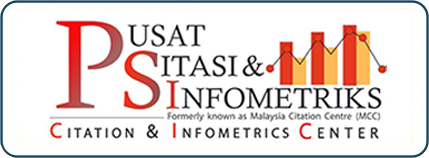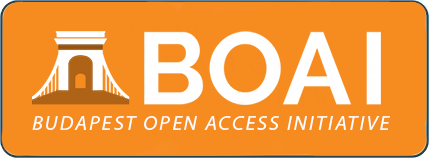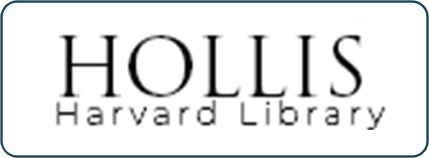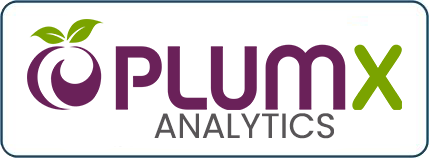Full fledged vs shared/outsourced takaful operators: A maqasid index approach
DOI:
https://doi.org/10.33102/jmifr.v17i2.290Keywords:
Full-fledged takaful, maqasid index, shared/outsourced operatorAbstract
The purpose of this study is to compare the performance of a full-fledged takaful operator versus shared or outsourced operators in Malaysia. Currently in Malaysia, there is only one full-fledged takaful company which bases its operation on the Shariah principles without conventional counterparts. In this paper, full-fledged takaful company refers to a takaful operator with no conventional parent or subsidiary. The paper uses the maqasid index approach which implements certain ratios based on the objectives of Shariah. The objectives of Shariah are threefold; first is to educate the individual, second is to establish justice and third is to maintain public interest. These objectives are well-suited to and consistent with the sustainable development goals (SGDs) within the financial institutions (FIs) to enhance a healthier economic system. The study used a maqasid index approach on six takaful operators in Malaysia to see whether there are any differences among the operators which are full-fledged takaful companies and those having shared or outsourced functions. The result showed that being a full-fledged takaful operator does not hinder financial institutions to have an acceptable Maqasid index figure by using the approach in this study. In fact, from the findings, a full-fledged takaful operator showed the highest Maqasid index compared to other types of takaful operators in Malaysia. Due to the limited data availability, the study only focuses on selected companies and variables in order to implement the use of ratios. This paper reflects the importance of the study to enhance that Islamic financial institutions should grow in achieving Malaysia’s goal to become an Islamic financial hub.This paper fulfils a gap towards the area of Islamic insurance, which is still very new compared to other topics in Islamic finance.
Downloads
References
Amin, H. (2019). Understanding consumer receptiveness of mortgage-based Islamic social finance using a maqasid framework: A preliminary study. International Journal of Islamic Economics and Finance (IJIEF), 2(1), 47–72. https://doi.org/10.18196/ijief.2115
Abdullah, M., Amanbayev, Y., Omer, G.S., & Elobied, A. (2012). An overview of takaful in Malaysia, 1-40. (Project Paper) International Centre for Education in Islamic Finance, INCEIF, Kuala Lumpur, Malaysia
Abdullah, S. (2015). The objectives of takaful and Shariah: Towards the achievement of maqasid shariah. Journal of Human Capital Development, 8(1), 93–104.
Ahmed, Z. (2013). Achieving maqasid al-shariah through takaful. www.Ziaahmed.Org, 203–213. http://doi.org/10.1002/9781118653814.ch12
Alhabshi, S.O., Sharif, K., Shaikh Abdul Razak, S.H., & Ismail, E. (2012). Takaful realities and challenges. Pearson.
Altuntas, M., Berry-Stölzle, T. R., & Erlbeck, A. (2011). Takaful-charity or business? Field study evidence from micro insurance providers. Journal of Insurance Regulation, Winter 30, 339.
Arifin, J., Ahmad Shukri, Y., & Sulong, Z. (2013). A conceptual model of literature review for family takaful (Islamic life insurance) demand in Malaysia. International Business Research, 6(3), 210–216. http://doi.org/10.5539/ibr.v6n3p210
Bedoui, M. H. E. (2012). Ethical competitive advantage for Islamic finance institutions: How should they measure their performance?. Harvard University.
Butner, S. (2012). How do subsidiaries pay revenue to their parent companies? Retrieved from http://smallbusiness.chron.com/subsidiaries-pay-revenue-parent-companies-77547.html
Daud, R. (2012). Underwriting Family Takaful Schemes. http://www.takaful.coop/images/stories/ICMIF%20Series%20of%20Articles%20No.%2018.%20Underwriting%20Family%20takaful%20Schemes.pdf
Frenz, T., & Soualhi, Y. (2010) Takaful and Retakaful: Advanced principles and practices (2nd ed.). Islamic Banking and Finance Institute Malaysia (IBFIM).
Kader, H. A., Adams, M., Hardwick, P., & Kwon, W. J. (2014). Cost efficiency and board composition under different takaful insurance business models. International Review of Financial Analysis, 32, 60–70. http://doi.org/10.1016/j.irfa.2013.12.008
Kassim, Z. A. (2008). Are takaful models converging? [Conference presentation] 2nd International Takaful Summit, The Jumeira Carlton Hotel, London.
Hassan, R., Salman, S. A., Kassim, S., & Majdi, H. (2018). Awareness and knowledge of takaful in Malaysia: A survey of Malaysian consumers. International Journal of Business and Social Science, 9(11), 45-53. https://doi.org/10.30845/ijbss.v9n11p6
Htay, S. N. N., Jawahir, M. K., & Salman, S. A. (2013). Shariah scholars’ view point on the practice of underwriting and risk rating for family takaful model. Asian Social Science, 9(9), 280-286.
Ismail, N., Alhabshi, S. O., & Bacha, O. (2011). Organizational form and efficiency: The coexistence of family takaful and life insuance in Malaysia. Journal of Global Business and Economics, 3(1), 122–137.
Malaysian Takaful Association and Ernst & Young (2014). Malaysian Takaful Dynamics. November 2014.
Mifrahi, M. N., & Fakhrunnas, F. (2018). Islamic bank peformance based on Maqasid Based Performance Evaluation Model (MPEM). Jurnal Ekonomi & Keuangan Islam, 4(2), 93–103. https://doi.org/10.20885/jeki.vol4.iss2.art6
Mohammed, M. O., Abdul Razak, D., & Md.Taib. (2008). The performance measures of Islamic banking based on the Maqasid framework. IIUM International Accounting Conference (INTAC IV), Putra Jaya Marriott, 25 June, pp. 1–17.
Mohamad, S. F. S. (2016). Shariah non-compliance risks in shared and outsourced services of takaful operators with insights from maqasid al-shariah [Doctoral dissertation]. International Centre for Education in Islamic Finance.
Mohamad, S. F. S., Alhabshi, S. O., & Lahsasna, A. (2018). Shariah non-compliance risks in shared and outsourced services of takaful operators. International Journal of Accounting, Finance and Business (IJAFB), 3(11), 119-133.
Mohammed, M. O., & Md.Taib. (2016). The performance measurement of Islamic banking based on the maqasid framework. In M. A. Choudhury, Islamic financial economy and Islamic banking (pp.94-113). Routledge.
Muhamad Abduh., & Mohd Azmi Omar. (2012). Islamic banking and economic growth: The Indonesian experience. International Journal of Islamic and Middle Eastern Finance and Management, 5(1), 35-47. https://doi.org/10.1108/17538391211216811
Nazarov, I. I., & Dhiraj, N. S. (2019). A conceptual understanding and significance of takaful (Islamic insurance): History, concept, models and products. International Journal of Innovation Education and Research, 7(4), 280–298. https://doi.org/10.31686/ijier.vol7.iss4.1408
Noordin, K. Muwazir@Mukhazir, M. R., & Madun, A. (2012). The commercialisation of modern Islamic insurance providers: A study of takaful business frameworks in Malaysia. http://repository.um.edu.my/36473/1/The%20Commercialization%20of%20Islamic%20Insurance%20Providers.pdf
Patil, N. (2012). Formation of companies. http://www.slideshare.net/Nitin6992/formation-of-companies
Redzuan, H., Rahman, Z. A., & Aidid, S. S. H. (2009). Economic determinants of family takaful consumption: Evidence from Malaysia. International Review of Business Research Papers, 5(5), 193-211.
Saad, N. M., Majid, M. S. A., Yusof, R. M., Duasa, J., & Rahman, A. R. A. (2006). Measuring efficiency of insurance and takaful companies in Malaysia using data envelopment Analysis (DEA). Review of Islamic Economics, 10(2), 5-26.
Salman, S. A. (2014). Contemporary issues in takaful (Islamic insurance). Asian Social Science, 10(22), 201–216. http://doi.org/10.5539/ass.v10n22p210
Salman, S. A., Hassan, R., & Tahniyath, M. (2019). Takaful an innovation to contemporary insurance. International Journal of Research in Social Sciences, 9(8), 434–442.
Sekaran, U. (2000) Research methods for business a skill building approach (4th ed.). John Wiley & Sons.
Sherman, F. (2019). The relationship between a company and its subsidiary. Newsletters. http://smallbusiness.chron.com/relationship-between-company-its-subsidiary-14696.html
Wahid, M. A., & Harun, M. S. (2019). Productivity of Islamic and conventional banks in Malaysia –During the pre and post global financial crisis. The Journal of Muamalat and Islamic Finance Research, 16(2), 86-95. https://doi.org/10.33102/jmifr.v16i2.225
Downloads
Published
How to Cite
Issue
Section
License
Copyright (c) 2020 Sharifah Fairuz Syed Mohamad

This work is licensed under a Creative Commons Attribution 4.0 International License.















